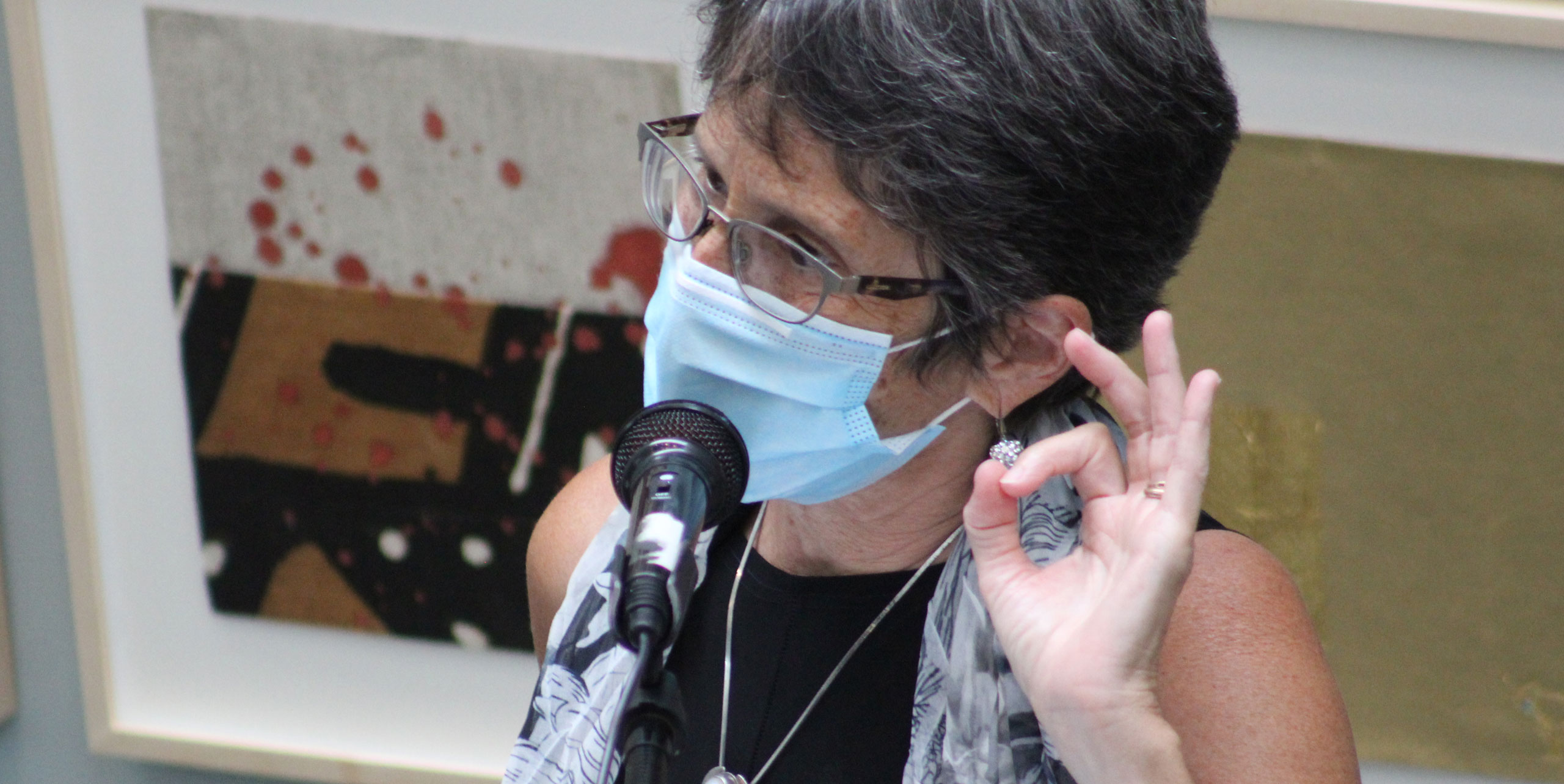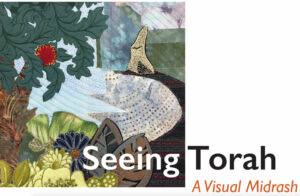Jewish learning Launching Hebrew College’s Centennial with Seeing Torah

Below are Hebrew College President Rabbi Sharon Cohen Anisfeld’s remarks at the opening of the Seeing Torah art exhibition on September 12, 2021, the first public event of Hebrew College’s centennial year.
I am so pleased to welcome you all today.
My deep thanks to our cantorial students and alumni for gathering us in sacred song, to Anita Rabinoff-Goldman, who will be introduced more fully in a few moments, for sharing your beautiful artwork with us, and to all those who have made this exhibit and this event possible—especially Rosa Franck, Mia Tavan, Arthur and Tanya McCann, and above all, our board member, chair of the Hebrew College Arts Committee, and my dear friend, Deborah Feinstein.
An artist herself, visionary leader, and third generation Hebrew College student, Deb intuited that the opening of this exhibit would be just the right way to open our Centennial year this fall. She was right, in so many ways.
I want to highlight three of those ways briefly— one that relates to the last 100 years of Hebrew College history, one that relates to the last 2,000 years of Jewish history, and one that relates to this particular moment in time.
First, the last 100 years. Hebrew College opened its doors 100 years ago this fall. Several decades ago, Hebrew College Dean Eisig Silberschlag described the centrality of Jewish culture and creativity in the College’s educational mission. “From its incipient days,” he said, “Hebrew College reflected a thorough commitment to Jewish culture. [Culture] an elusive entity — is a derivative of the Latin word Colere—which means to till, to improve one’s field or garden through labor.” If actual farming explores the life-giving potential of the earth, culture ‘embraces the vast potential of the universe.’
People often argue about which is more important in Jewish life—tradition or innovation, continuity or creativity. To that question, Hebrew College has insistently and emphatically said, “Yes!” Not either or, but both and. Yes, it is through deep literacy that we give rise to rich intellectual, spiritual and cultural creativity. Yes, it is through Jewish education that we give birth to a vibrant Jewish future.
What better expression of those values than an art exhibit born of deep and sustained study of the yearly Torah cycle—that is itself a work of visual midrash? Undertaken—incidentally—by someone who had supposedly “retired”—but has shown us all what it means to cultivate a lifelong capacity for learning, creativity, and renewal.
This brings me to the last 2,000 years. In a passage that is probably about 1800 years old, the Babylonian Talmud, in Tractate Eruvin, teaches: “Eyn Beit Midrash b’lo ḥiddush.” There is no house of study without hiddush, without something new happening. In this context, a hiddush is a new insight into an ancient text that emerges in dialogue around the tables of the Beit Midrash. At its core, this commitment to ḥiddush flows from the conviction that every human soul is an utterly new and unique reflection of the divine image. Human diversity is woven into the very fabric of creation. The measure of a true Beit Midrash is the extent to which it elicits the new insights and experiences of the living, breathing human beings who bring themselves wholeheartedly to Torah, which itself is a continual process of co-creation.
Anita, your work gives exquisite expression to this abiding truth. You have enlarged and expanded our understanding of Torah by sharing so generously your own creative encounter with the text.
Finally, this brings me to today, and the particular moment in which we find ourselves. This is a tender and uncertain time. As we move into this new year, we carry the losses and longings of the last 20 months. We had all hoped that, by now, the pandemic would be fully behind us. It is not, and we are again figuring out how to reorient, how to summon more compassion, more courage, more creativity.
In this moment, what a blessing to experience the gift of beauty, of color and texture and an artist’s hand reaching out, connecting us all with stories and texts that are timeless and striving to touch that which is transcendent.
Shana tova and thank you all for being here.
Seeing Torah is open September 12-December 10. Due to the numerous high holidays in September, please call 617-559-8600 before visiting to confirm whether the college will be open at your desired date and time. From October 1 through December 10, the exhibit will be open Mondays–Thursdays, 8:30 a.m.–4:00 p.m.; Fridays, 8:30 a.m.–12:30 p.m.; and Sundays 9 a.m.–1 p.m. Learn more at hebrewcollege.edu/events/seeing-torah/.


